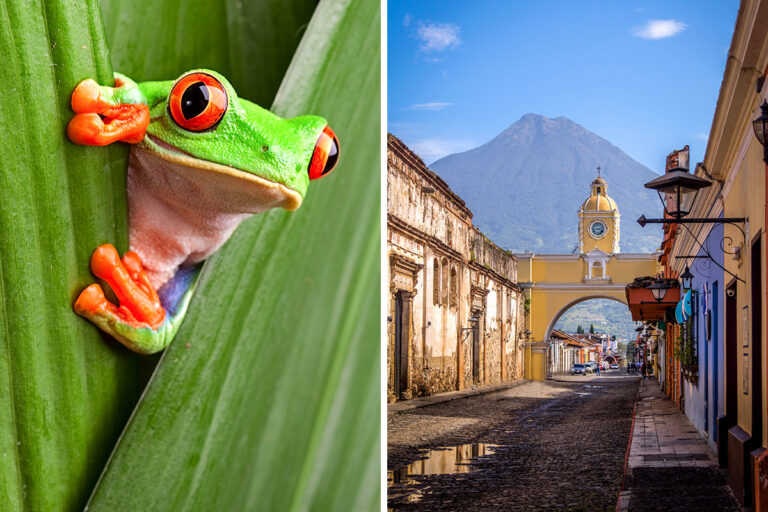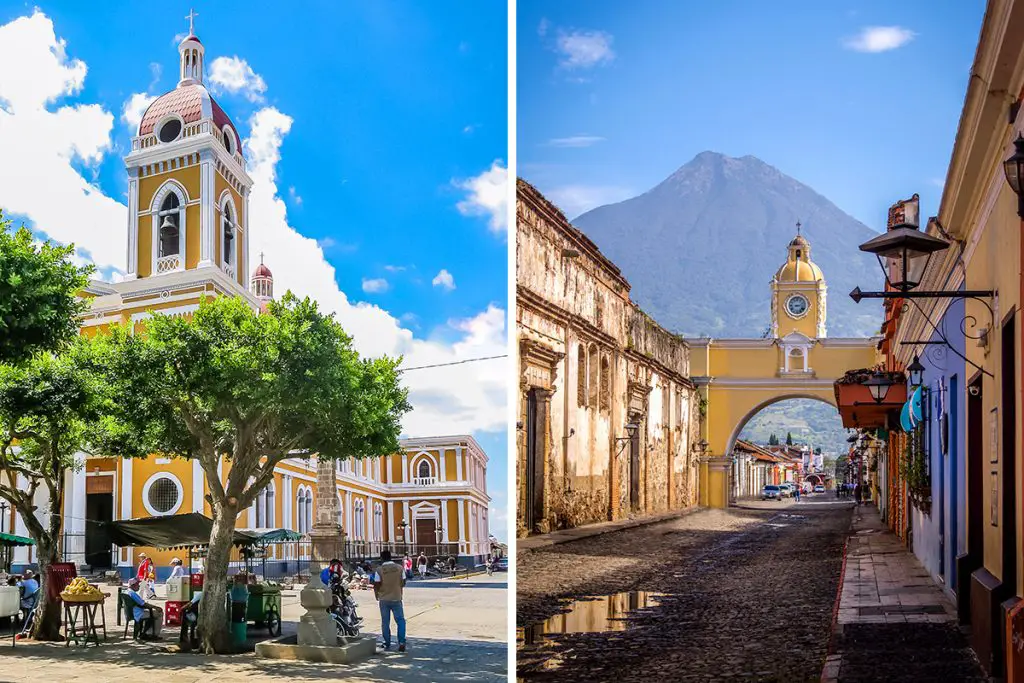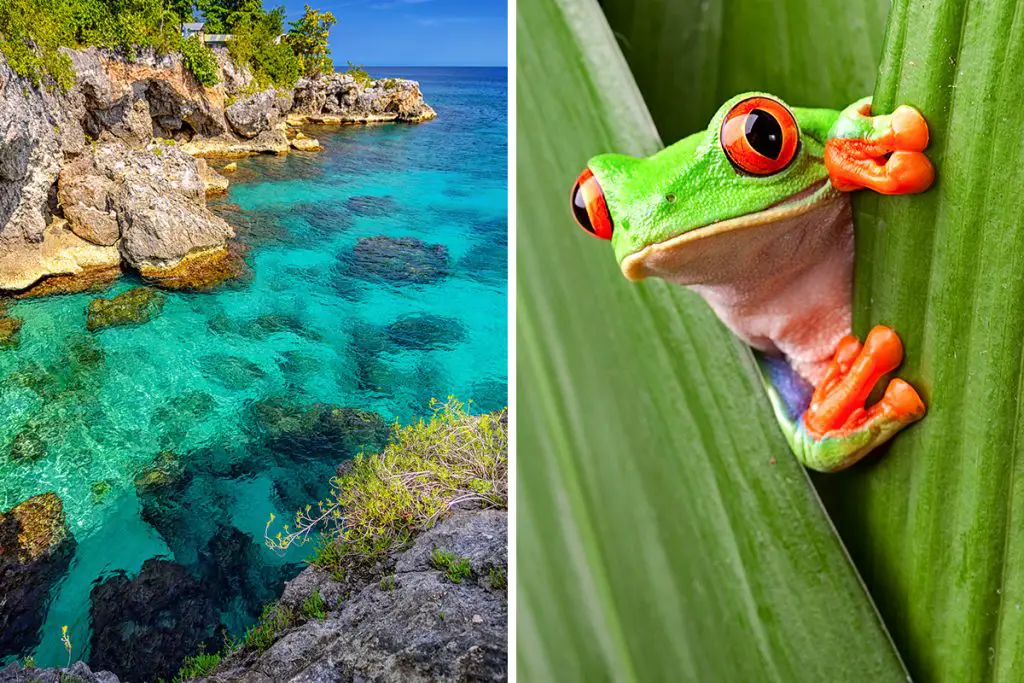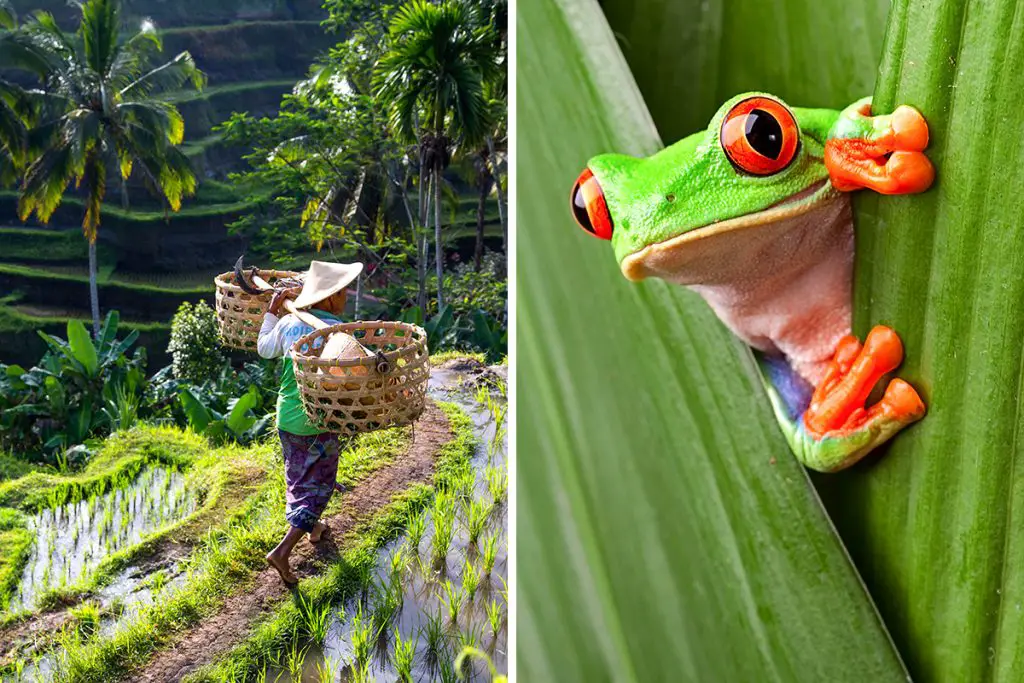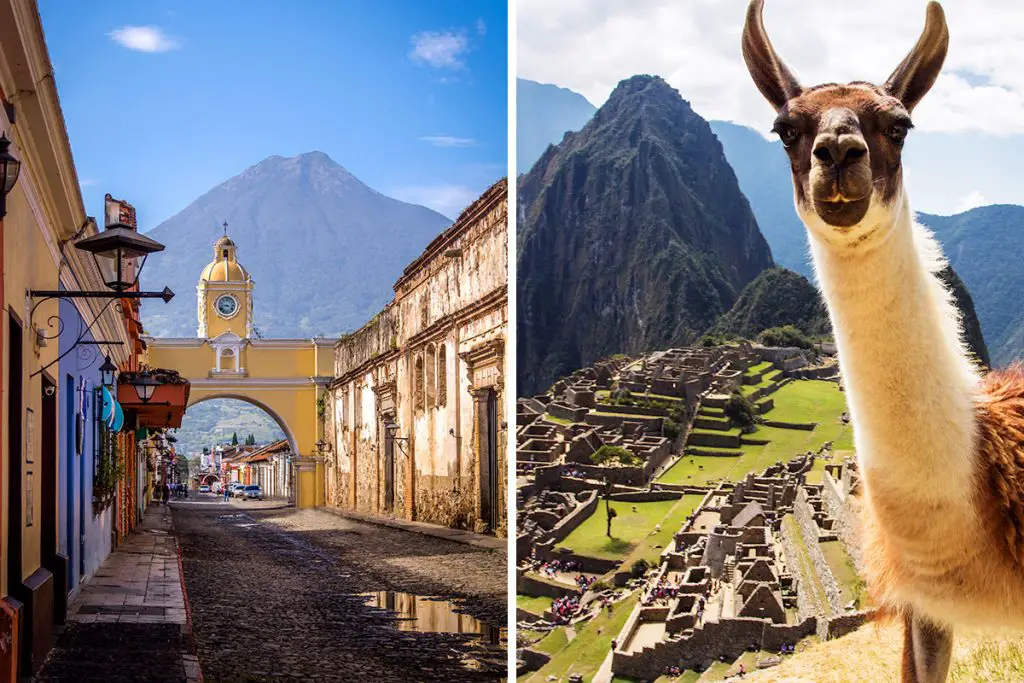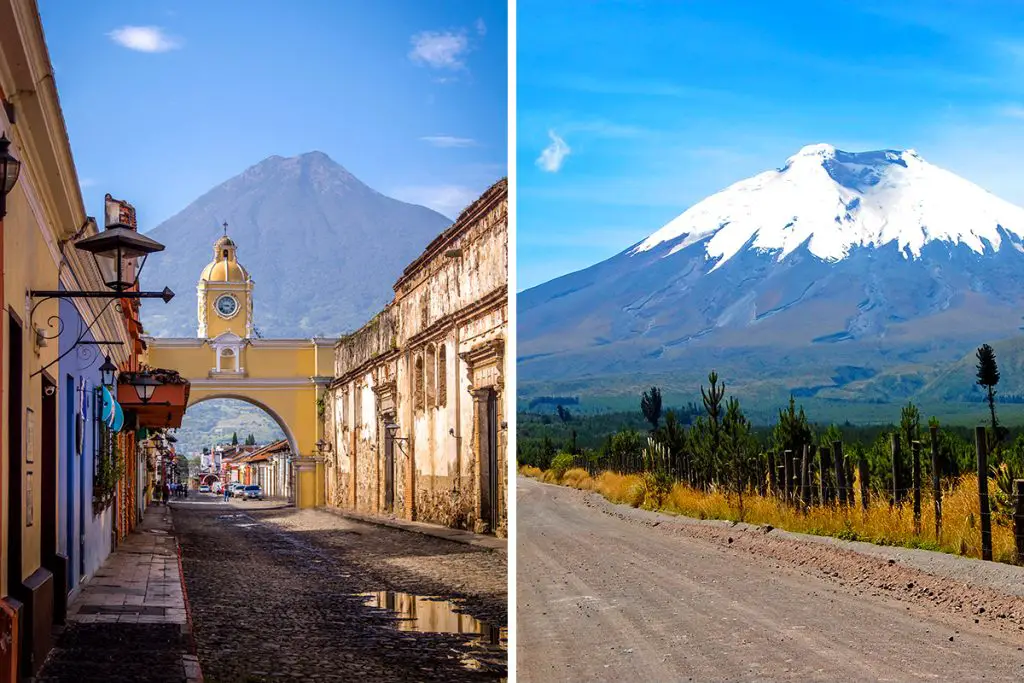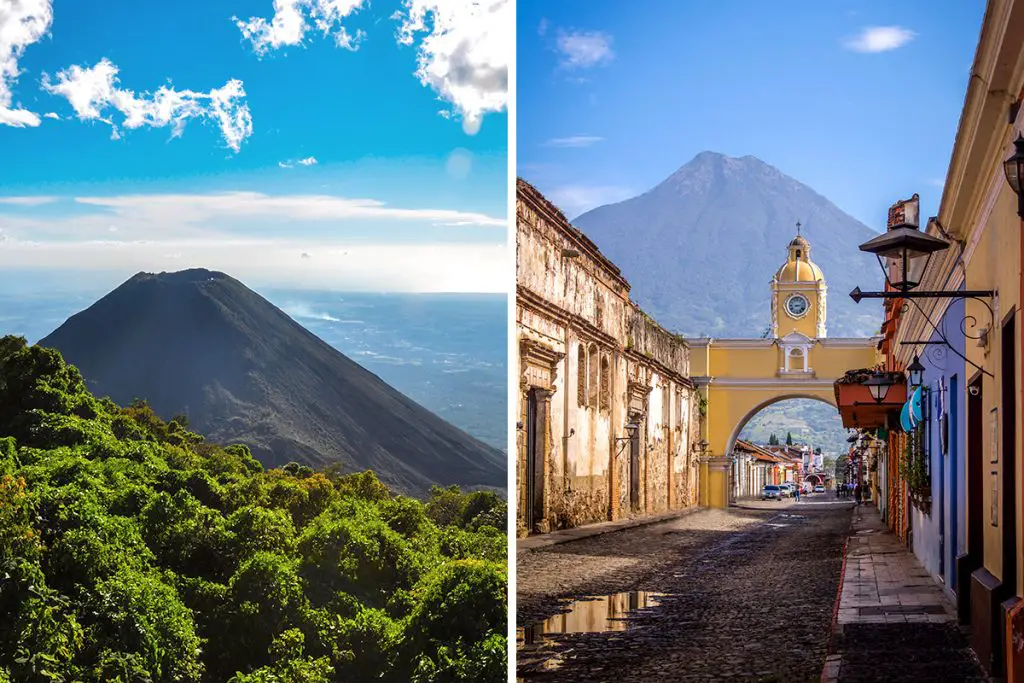Costa Rica is a country that has been able to maintain its natural environment better than any other country in Central America. The locals and other organizations protected the endangered fauna and flora until they thrived. Lastly, the culture of Costa Rica is also exciting because it has evolved from different cultures in Latin America and North America.
If you love history, then there is no better place than Guatemala. Many different cultures and civilizations have inhabited this country throughout the years. It has a rich cultural heritage that dates to 3,000 B.C. The Mayans were the first inhabitants and left many important artifacts, such as statues and hieroglyphics, that tell us about their lives and beliefs.
Costa Rica
You should visit Costa Rica for two reasons: its culture and how it has preserved its environment. Costa Rica has a lot of natural beauty and incredible diversity, from volcanoes and waterfalls to beaches and national parks.
Costa Rica has a variety of natural wonders that make it easy for visitors to see the best of this country, like the Monteverde Cloud Forest, Manuel Antonio National Park, Viento Fresco, and Playa Negra.
There are a lot of ways for you to experience the natural wonders of Costa Rica. You can have tours of their cloud forests and volcanoes, letting you experience nature up close and personal. The tours will leave you with educational information about your environment and how it came to be.
When it comes to relaxing, you can do many water activities on Costa Rica’s beaches, rivers, and waterfalls. You can go snorkeling, kayaking, rafting, surfing, and many more.
What Makes Costa Rica Unique
Life’s a Beach in Costa Rica
Costa Rica has some of the best beaches in the world, and there’s something for every traveler. Costa Rica has everything if you want to relax on a white-sand beach with crystal clear water, explore hidden coves, or snorkel in coral reefs. Playa Grande, Punta Uva, and Playa Junquillal are some of Costa Rica’s best beaches.
Playa Grande
Playa Grande is at the southern end of the Nicoya Peninsula in Guanacaste Province. This picturesque beach has crystal clear waters and a white-sand beachfront. The water is shallow enough for children to play in, making it perfect for families with young children who are still learning to swim.
Playa Grande also has many hotels, restaurants, shops, and businesses to keep guests entertained while they stay there.
Playa Junquillal
Playa Junquillal is also one of Costa Rica’s best beaches. It’s a long, vast stretch of fine white sand with plenty of space to relax and unwind. It’s an excellent place for families with small children.
The beach is very calm and shallow, but there are areas where the water gets deeper and offers enough space for swimming. The beach has some facilities, including showers and restrooms. There are also many restaurants if you want to grab something before or after your visit to the beach.
Punta Uva
Punta Uva is another famous beach in Costa Rica known for its clear water and white sand. The beach is on the southern side of Guanacaste province and offers some of the best surfing in Costa Rica. Plenty of water sports are available at this beach, including paddle boarding and snorkeling.
Depending on the amenities you want, it costs around 40 USD (180,000 COP) to spend time on the beach.
Preserved Biodiversity
Another reason why you should visit Costa Rica is its national parks. There are several national parks in Costa Rica, including Isla del Coco, Manuel Antonio National Park, and Monteverde Cloud Forest. If you’re looking for a vacation with plenty of activity opportunities while still having access to nature at its best, then Costa Rica is for you.
Isla del Coco
Isla del Coco is one of the best national parks in Costa Rica, and it was also declared a World Heritage Site by UNESCO in 1997.
It’s one of the most remote islands in the world and a popular destination for scuba diving. The waters surrounding Isla del Coco are some of the clearest in Costa Rica, making it a popular vacation spot for divers and snorkelers.
The island is also home to several species of fauna, including the hawksbill and green sea turtle.
Manuel Antonio National Park
With dense rainforests, white-sand beaches, and some of the country’s best wildlife viewing, Manuel Antonio National Park is one of Costa Rica’s famous National Parks. Manuel Antonio is the name of a buried conquistador in the area, hence the name.
The national park also has two beaches inside it if you’re looking for water activities. Depending on the inclusions of the tour package, a national park tour costs around 80 USD (360,000 COP).
Besides rainforests, Costa Rica has cloud forests that are home to many species of plants and animals. These forests have a high amount of rainfall, which leads to misty conditions. The clouds in these forests make them feel like they are floating in the air. In contrast, dry forests are more common in areas with low precipitation levels.
Monteverde Cloud Forest
Monteverde Cloud Forest is one of Costa Rica’s cloud forests. It is a UNESCO World Heritage Site and is home to many species of birds and flowers, including the Resplendent Quetzal and Great Curassow, the most beautiful birds in the world. The Monteverde Cloud Forest Reserve is also home to the world’s second-largest butterfly Morpho.
A tour of Costa Rica’s cloud forests costs around 40 to 100 USD (24,000 or 61,000 CRC), depending on the package tour.
Exquisite Local Cuisine
Costa Rica has a unique cuisine that reflects its rich cultural heritage. The local cuisine includes a variety of fresh seafood, meat, fruits, and vegetables. Many Costa Rican dishes are similar across Latin America, but some have regional differences.
Gallo Pinto
The country’s most famous dish is Gallo Pinto, or “spotted rooster.” It’s made by piping strips of yellow corn dough around a chicken breast, then frying the chicken in oil until it’s golden brown on one side and cooked through on the other. It’s served with boiled white rice, beans, and plantains, but it is also served with different types of meat, such as pork, beef, or shrimp.
Besides their famous dish, here are two notable dishes that you should try in Guatemala:
Papas Bravas
Papas Bravas is a Spanish snack dish consisting of potatoes, tomatoes, onion, and garlic sauteed in tomato sauce. It’s best enjoyed with French bread dipped in olive oil and sprinkled with paprika.
Churrasco
Churrasco is a typical dish from Argentina. It consists of beef steak marinated in herbs and spices and then grilled over a charcoal or wood fire. It’s usually served with chimichurri sauce (a mixture of parsley, garlic, oregano, and olive oil).
Adventurous Volcano Tours
If you’re adventurous, hiking is one of the best ways to experience Costa Rica. The country has a lot of beautiful trails that lead to beautiful waterfalls and lakes. Tour guides will help you experience these active volcanos up close.
The most common volcano to hike is Poás Volcano. It’s a short hike, only about 2 hours, but it goes through different ecosystems with beautiful views of the clouds rolling across the landscape.
Arenal Volcano
The Arenal Volcano is an active stratovolcano in northwestern Costa Rica. The volcano has a height of 1,657 meters (1 mi) above sea level. It has erupted many times and continues to do so today. It is near the Guanacaste province capital of Liberia and has hot springs and steamy jungle baths.
It’s perfect for hiking because it has a lot of different trails that range from easy to difficult, so you can choose the one that suits your fitness level.
Poás Volcano
Poás Volcano is the most active volcano in Costa Rica and is in the country’s central highlands. It last erupted in 2019, but you can still hike to see it up close.
Other volcanoes offer different ecosystems and amenities. A tour of a volcano in Costa Rica costs around 150 USD (94000 CRC), depending on the tour package.
Guatemala
Guatemala is a beautiful country with a lot to offer. It’s the second-largest country in Central America and has some of the most diverse landscapes on the planet. From volcanoes, lush jungles, and ancient ruins, Guatemala has it all.
Visiting Guatemala is like traveling back in time. It’s a place where you can still experience the culture and traditions of the Mayan people. But it’s not only about ruins and nature.
The country is a melting pot of culture, heritage, and history. It’s one of the oldest civilizations in Central America, and its people have preserved their traditions for centuries. Guatemala City is a bustling metropolis with rich culture and history.
Some of the locals are indigenous descendants of the Mayan civilization. They live in rural areas, preserving their culture through traditional weaving and handcrafting. There truly is a lot to learn and experience in Guatemala if you’re looking for an educational vacation.
What Makes Guatemala Unique
A Trip to the Past
Guatemala is a country that has gone through many turbulent times in its history but always recovers. Spaniards and Mayans influenced the locals, who have a strong sense of identity and pride in their culture. You can see this in how they dress, speak, dance, and celebrate their festivals.
You can visit ruins in Guatemala like Tikal and Quirigua and many other fascinating archaeological sites such as Palenque, Copan, and Yaxchilan. Many cities remain colonial such as Antigua, Quetzaltenango, and Flores will impress you with their beauty.
Tikal
The Mayans built Tikal around 741 AD and used it as a center for political, military, and economic activity. Over time, Tikal became one of Central America’s most important Mayan cities. The Mayans built the citadel to protect the people of Tikal and their sacred objects.
When the Mayans abandoned Tikal around 830 A.D., they left many treasures, including stone carvings and stucco friezes.
Palenque
Palenque is a small city with enormous history. It was the capital of the Maya kingdom of Palenque from 226 BC to ca. 799 AD. Its ruins are some of the most well-preserved ancient structures in Central America.
The city’s most famous building is its Temple of Inscriptions, which features several languages on its walls, including the Mayan and Nahuatl languages.
The site also contains mounds once sacrificial altars for ritual offerings to the gods. Archaeologists believe these altars were for various rulers as they were being worshiped.
Antigua
The colonial city of Antigua retains its colonial charm, with cobblestone streets and beautiful Baroque buildings. Antigua is a UNESCO World Heritage site, and its many monuments reflect the city’s history. The city is also known for its handicrafts, including ceramics and woven goods.
Whether it’s ruins or colonial cities, Guatemala will take you to the past.
Black-Sand Beaches
The Black Sand Beaches of Guatemala are the most popular beaches in Central America. El Paredón, Sipacate, and Tecojate are one of the best places to visit if you want a relaxing getaway with your family or friends.
You can enjoy some great natural attractions traveling along this stretch of coastlines, such as caves and waterfalls. The area is also known for its crystal clear water and the vast waves you can surf during summer.
The Green Route of Verapaz
Many tourist attractions like Lake Lachuá, Candelaria Caves, and Semuc Champey form The Green Route of Verapaz. UNESCO protects these natural sites and debates them as world heritage sites. This route is part of a project that seeks to make the tourist attractions of Central America more accessible to visitors.
Semuc Champey
Lush forests and indigenous features surround Semuc Champey. Many natural springs feed into the pools. The water here is not only beautiful but also very clean. The water has a high mineral content, making it rich in calcium and magnesium.
Lachuá Lake
The Lachuá Lake is about 14,500 hectares (56 sq mi) of protected area since 1975. The lake has some characteristics like the Great Salt Lake in Utah, United States: it is almost surrounded by salt flats.
Candelaria Caves
Many caves connected by a river form the Candelaria Caves. It’s one of the largest cave systems in Guatemala. Running water through limestone eroded over time and created impressive caverns.
The caves are on the outskirts of Candelaria, a small town in northern Guatemala. Many entrances and exits in the Candelaria Caves system give the caves a seamless experience.
Fascinating Museums
Guatemala has fascinating museums that will educate you about the country’s culture. The country has educational sites like Museo Popol Vuh, The National Museum of Archeology and Ethnography, and Palacio Nacional de la Cultura. The museums are a must-see if you’re interested in learning more about Guatemala’s history. The museum has exhibits that cover the country’s pre-Hispanic, colonial and postcolonial periods.
Museo Popol Vuh
Museo Popol Vuh is a museum with exhibits about Mayan culture. The museum has a nice collection of artifacts and exhibits on display, with some interactive components. The exhibits are well displayed and provide good background information about Mayan culture. It houses over 20,000 pieces, including Mayan stone slabs carved with hieroglyphics, masks, and figurines.
Palacio Nacional de la Cultura
Palacio Nacional de la Cultura was the most important building in Guatemala City. Rafael Pérez de León and other architects built it during the government of President Estrada Cabrera, who ruled Guatemala from 1898 to 1920.
It is an iconic example of brutalist architecture during its construction. They built it to be a house for the president and a place for cultural activities, hence its name, which translates as “Green Palace.”
Is Guatemala Better Than Costa Rica?
Costa Rica and Guatemala are two of the most popular destinations for travelers looking for a tropical getaway. The region has natural beauty and warm weather, but it’s also home to some of the most unique and vibrant cultures on earth. The two countries share many similarities, but they also have some differences.
Both countries offer excellent accommodation in every price range, so you’re sure to find something that fits your budget.
If you want to invest in a country’s culture, take a trip to the past, and bask in nature, then Guatemala is the place for you. But Costa Rica is for you if you’re adventurous, want to relax in tropical getaways, or want to try Latin American cuisine.
FAQ
Is Guatemala Safer Than Costa Rica?
Both countries are safe for travelers, but Costa Rica is safer. Costa Rica has one of the lowest crime rates in Latin America, and its capital, San Jose, is one of the safest cities in Central America.
Is Guatemala Cheaper Than Costa Rica?
Guatemala is not cheaper than Costa Rica. Costa Rica is one of the most affordable countries in Central America, so it’s easy to travel there on a budget.
Costa Rica has a lower average cost of living than Guatemala. The prices of meals and rent are more affordable in Costa Rica than in Guatemala, but transportation in Guatemala is cheaper.
Is Guatemala Richer Than Costa Rica?
Costa Rica is more prosperous than Guatemala. Guatemala’s Gross Domestic Product (GDP) is 58,000,000 USD, while Costa Rica’s GDP is 64,276,000 USD. It means that Guatemala’s economy is more prominent than Costa Rica’s.
Costa Rica vs. Guatemala Tourism
In Guatemala, the main attraction is nature and its history. The country has many ruins and museums that will educate you about the country’s history. Some popular destinations include The National Museum of Archeology and Ethnography and Tikal National Park.
While Costa Rica has some of the best beaches in Central America, the country has many beaches and nature reserves, home to many plants, animals, and birds. The country has several other attractions, including Arenal Volcano National Park, Manuel Antonio National Park, and Monteverde Cloud Forest.
Is Guatemala Near Costa Rica?
Guatemala is near Costa Rica, but it is not the same country. Both countries are in Central America. Guatemala’s capital is Guatemala City, while Costa Rica’s capital is San Jose.
Where Is Guatemala From Costa Rica?
Guatemala can be found northwest of Costa Rica. Separating these two countries are El Salvador, Honduras, and Nicaragua.
Guatemala to Costa Rica Distance
Guatemala is 1,445.2 km (899 mi) away from Costa Rica. El Salvador, Honduras, and Nicaragua separate the two countries.
How Do I Get From Guatemala to Costa Rica?
You can get from Guatemala to Costa Rica by driving, commuting via buses and trains, or by plane.
The most common way to get from Guatemala to Costa Rica is by plane since it saves you time and money. Alternatively, you can commute via the buses and trains in both countries.
Can You Fly From Guatemala to Costa Rica?
There are many flights available from Guatemala to Costa Rica every day. LATAM Airlines and Aeroméxico offer direct flights from Guatemala City to San Jose and vice versa.
The best way to get cheap flights is by booking your flight as early as possible. You can also use a travel agency to help you find the best deals.
Guatemala to Costa Rica Flights
The flight from Guatemala City to San Jose is easy, with great views of Guatemala and Costa Rica volcanoes. The price for flights from Guatemala to Costa Rica is around 1655 USD, depending on the amenities of the ticket.
Guatemala to Costa Rica Flight Time
Flights from Guatemala to Costa Rica are short; the average flight time is around 2 to 4 hours, and some airlines offer even faster service.
What Airlines Fly From Guatemala to Costa Rica?
You can fly from Guatemala to Costa Rica via LATAM airlines, Air Canada, Air France, Avianca, Copa Airlines, and Aeroméxico Airlines.
Guatemala to Costa Rica by Train
Traveling from Guatemala to Costa Rica by train isn’t possible since there are no railways connecting both countries. The existing railways between the countries are only for companies and aren’t used for public transport. But it is possible to commute via trains and buses to Costa Rica from Guatemala if you want to.
Guatemala to Costa Rica Drive
The trip from Guatemala to Costa Rica is a long trip but it’s possible. The drive may take 4 to 6 hours, and there are several ways to do it. You can take the Pan-American Highway, which runs from Alaska through Central America and South America. But you can also take one of the roads connecting Guatemala with Costa Rica.
Guatemala to Costa Rica by Bus
Taking a bus from Guatemala to Costa Rica is a possible option. You can ride a bus from Guatemala City to San Salvador and then from San Salvador to San Jose, Costa Rica. The trip takes about 29 hours for 110 USD (68,350 CRC or 865 GTQ) per person.
How Long Does It Take to Get to Costa Rica From Guatemala?
Depending on what mode of transportation you prefer, the fastest travel time would be around 2 hours, and the longest will be 6 hours.
The best way to get from Guatemala to Costa Rica is by plane. Several flights are between Guatemala City and San Jose in Costa Rica. The flight takes about 2 to 4 hours, and many airlines take this route.

